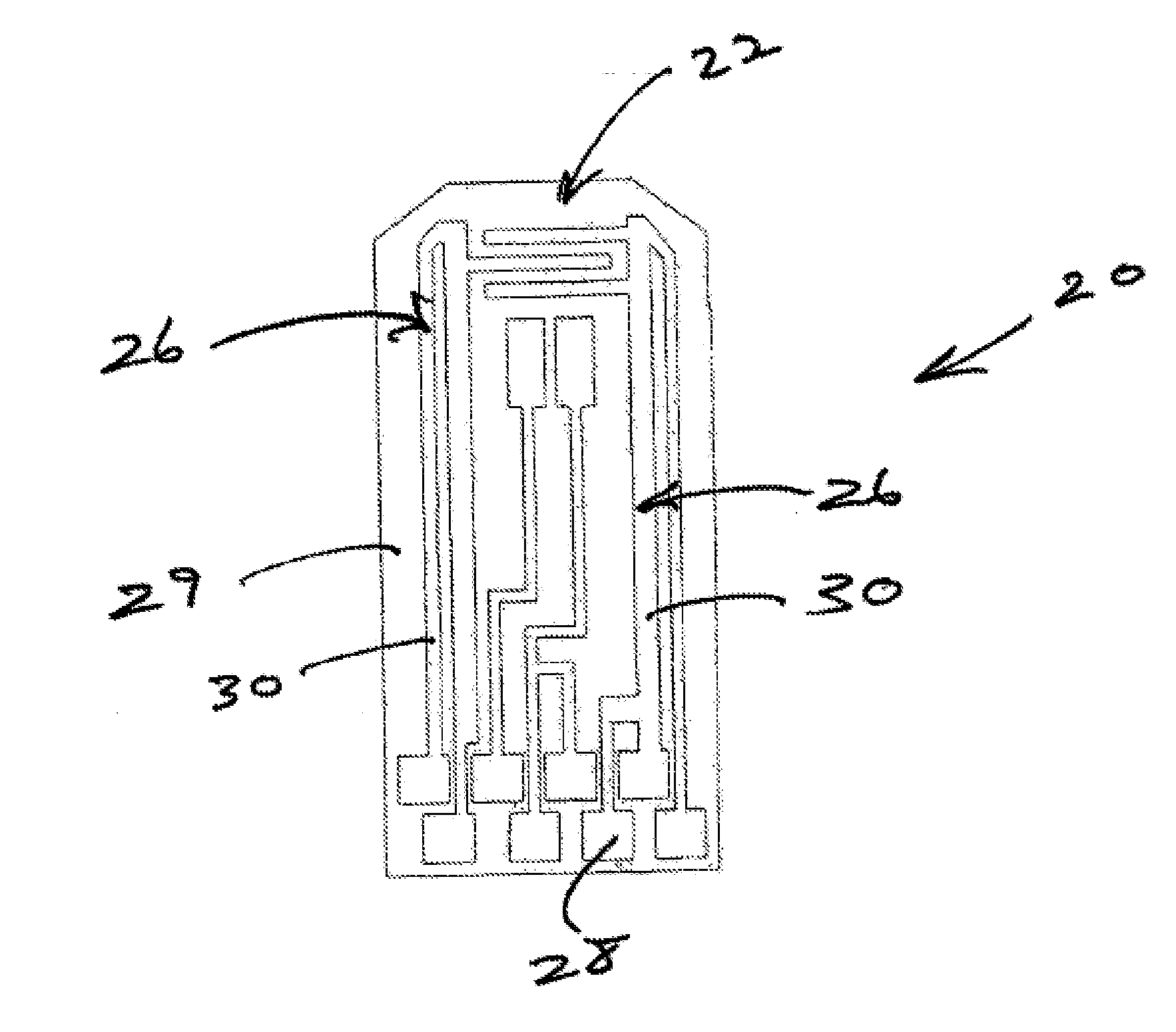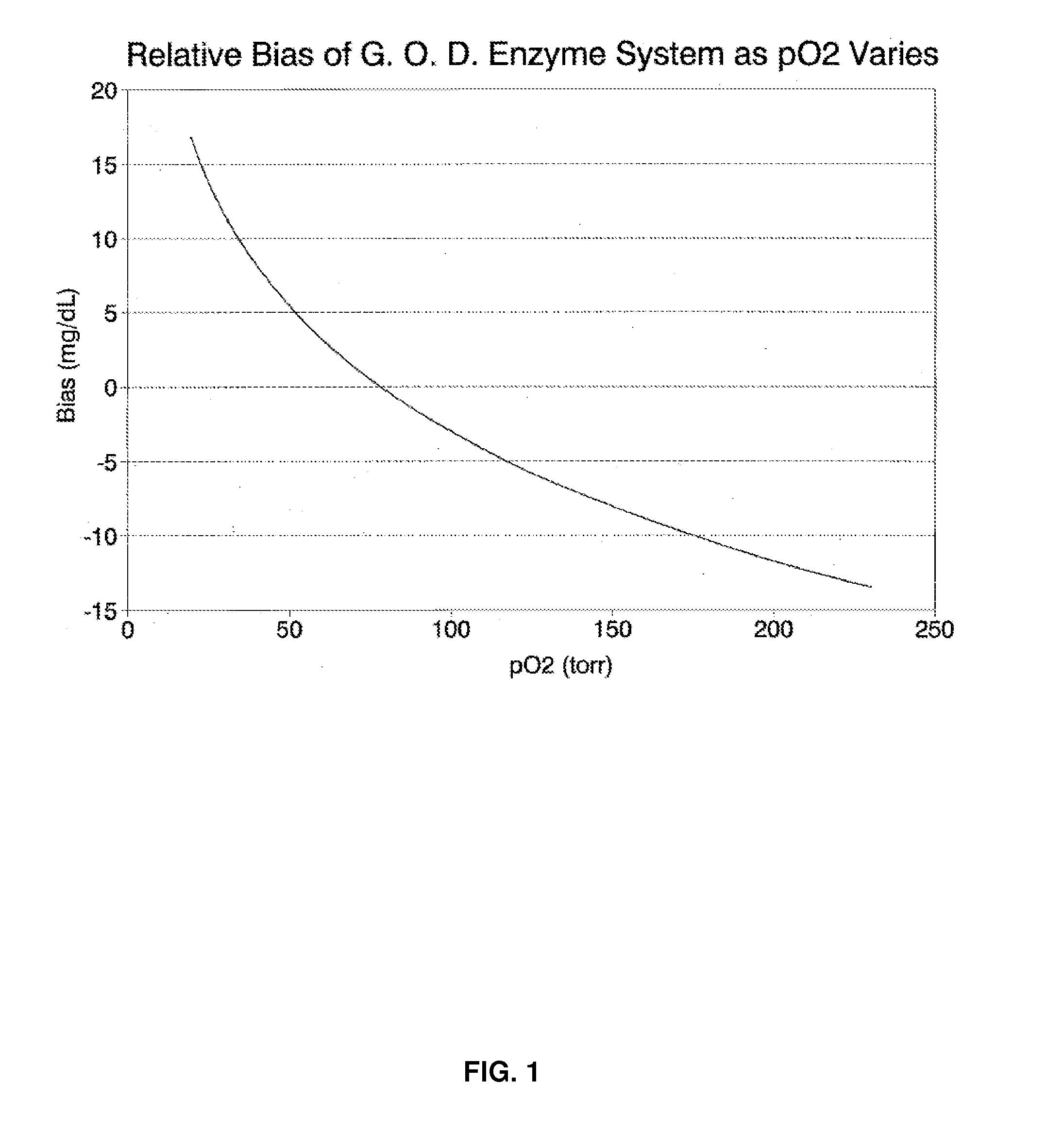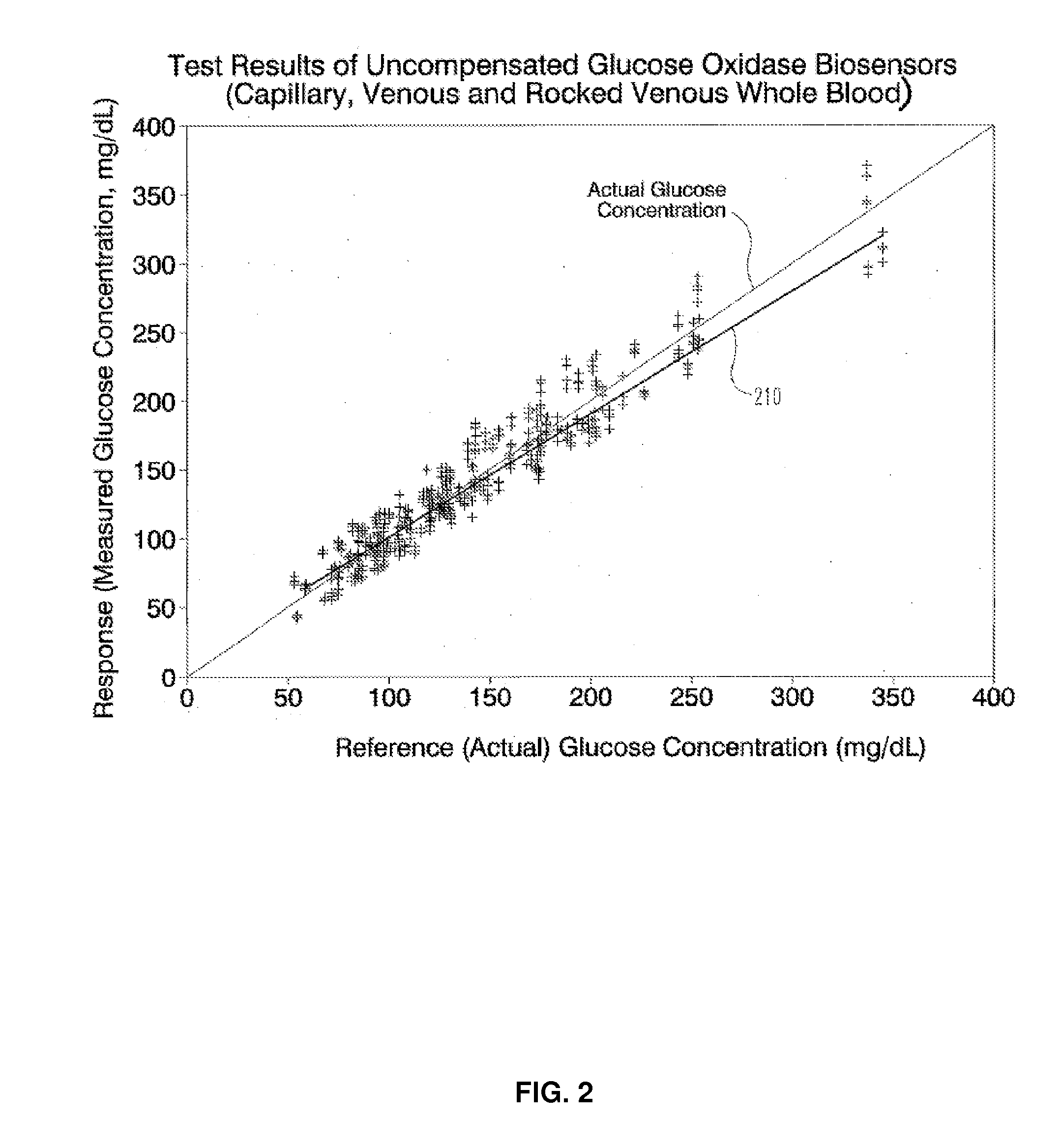Systems and methods to compensate for sources of error during electrochemical testing
a technology of electrochemical testing and sources of error, applied in the field of statistics and electrochemistry, can solve problems such as inaccurateness, inability to compensate for errors during electrochemical testing, and inability to use hands, feet, etc., to improve the accuracy of blood samples, improve the level of oxygen insensitivity, and improve the measurement sequence
- Summary
- Abstract
- Description
- Claims
- Application Information
AI Technical Summary
Benefits of technology
Problems solved by technology
Method used
Image
Examples
example 1
[0120]A test sequence is employed comprising a first DC test block followed by 4 AC test blocks with different excitation frequencies, followed by a second DC test block. Shown in FIG. 8 are representative current responses for this system, with the horizontal axis representing time after fill sufficiency and the vertical axis on the left representing DC voltage. A second vertical axis, corresponding to the four AC responses, represents the frequencies of the four AC test blocks. From each of the DC test blocks, four DC readings are taken at different time points, and from each of the AC test blocks a phase-shift and an admittance value are determined and used for the glucose calculation algorithm. In total, 8 AC observables and 8 DC observables are used.
[0121]From the four phase-shift values, a weighted combination P-Effective is calculated: Peff=(p1*P1)+(p2*P2)+(p3*P3)+(p4*P4).
[0122]From the four admittance values, a weighted combination Y-Effective is calculated: Yeff=(y1*Y1)+(y2...
example 2
[0165]FIG. 9 illustrates a specific embodiment in which the first pulse and second pulse are of opposite polarity, which can be particularly useful for compensating for various factors such as, for example, slow enzyme kinetics. FIG. 9 shows a graph 78 of an example of a fixed test time sequence in accordance with one embodiment. As can be seen, the graph 78 has a first y-axis 80 located on the left side of FIG. 9 that represents the DC voltage level (in volts), including polarity, as applied during the DC pulses. In other words, to determine the voltage and polarity of the applied DC pulses, reference should be made to the first y-axis 80. A second y-axis 82 shows the frequency levels (in kHz) applied during the AC pulses. In other words, to determine the frequency levels (in kHz) applied during the applied AC pulses, reference should be made to the second y-axis 82. Graph 78 also has an x-axis 86 that indicates the time (in seconds) after fill sufficiency of the sensor 20 is detec...
example 3
[0173]In an alternative embodiment, the test sequence illustrated in FIG. 9 is altered with regard to the duration of each DC and AC pulse, as well as the magnitudes of the DC pulses. For example, with reference to the sequence references of FIG. 9, the open cell condition 96 preceding the first DC pulse 98 lasts about 2 seconds, the first DC pulse 98 has a magnitude and polarity of about +450 mV and lasts about 2.5 seconds, open cell condition 108 lasts about a quarter of a second, AC signal 112 lasts about a half second at a frequency of about 10 kHz, AC signal 114 lasts about a quarter of a second at a frequency of about 20 kHz, AC signal 116 lasts about a quarter of a second at a frequency of about 2 kHz, AC signal 118 lasts about a quarter of a second at a frequency of about 1 kHz, open cell condition 128 lasts about a quarter of a second, and second DC pulse 130 has a magnitude and polarity of about +450 mV and lasts about 2.5 seconds.
[0174]Certain embodiments have proven usef...
PUM
| Property | Measurement | Unit |
|---|---|---|
| time | aaaaa | aaaaa |
| time | aaaaa | aaaaa |
| temperature | aaaaa | aaaaa |
Abstract
Description
Claims
Application Information
 Login to View More
Login to View More - R&D
- Intellectual Property
- Life Sciences
- Materials
- Tech Scout
- Unparalleled Data Quality
- Higher Quality Content
- 60% Fewer Hallucinations
Browse by: Latest US Patents, China's latest patents, Technical Efficacy Thesaurus, Application Domain, Technology Topic, Popular Technical Reports.
© 2025 PatSnap. All rights reserved.Legal|Privacy policy|Modern Slavery Act Transparency Statement|Sitemap|About US| Contact US: help@patsnap.com



